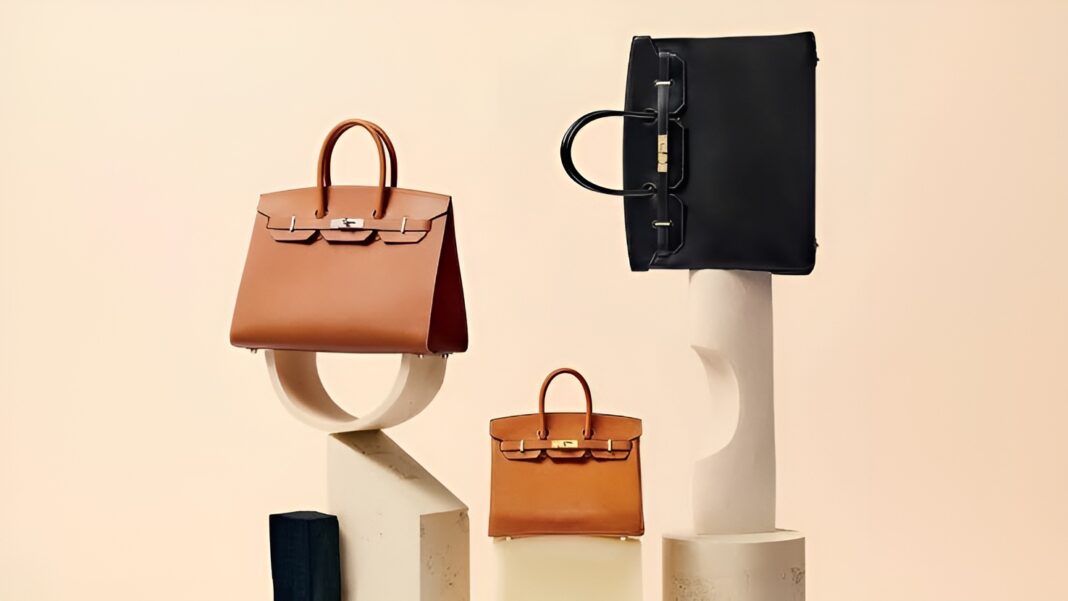In the world of high fashion, the Hermès Birkin bag has emerged as a symbol of luxury and a compelling investment asset. Recent analysis suggests that these iconic handbags may offer better returns than traditional investments like stocks and gold.
According to a 2016 study by Baghunter, a leading online marketplace for luxury handbags, Hermès Birkin bags have appreciated globally at an average annual rate of 14.2 percent over the past 35 years.
Birkin bags are luxury handbags created by Hermès in 1984, named after actress Jane Birkin after a chance encounter with the brand’s CEO on a flight. They are costly due to their handcrafted production, use of premium materials, and exclusivity driven by limited availability and long waitlists.
In Egypt, Hermès does not operate official boutiques; however, Birkin bags are available through reputable luxury resellers such as The Closet Egypt, Puzzles Egypt, and Peppers Luxury. Prices for these coveted handbags vary significantly based on factors like material, size, and rarity. For instance, a pre-owned Hermès Birkin 35 in orange Togo leather was listed at approximately EGP 350,000. On the higher end, exotic models like the Hermès HAC 50 Birkin crafted from Porosus crocodile leather can reach prices that are even higher than EGP 1 million.
Such price points place Birkin bags well beyond the reach of the average Egyptian consumer. Consequently, traditional investment avenues like gold, bank bonds, and real estate remain more accessible and familiar options for wealth preservation in Egypt. While Birkin bags have demonstrated impressive appreciation in value globally, their high entry cost and limited availability make them a luxury asset primarily attainable by a select few.
Globally though, the Birkin’s appreciation performance outpaces both the S&P 500, a stock market index that tracks the performance of 500 of the largest publicly traded companies in the U.S., often used as a benchmark for overall market returns , which returned an average of 8.7 percent annually over the same period, and gold, which delivered an even negative average annual return of -1.5 percent. These findings underscore how valuable a Birkin can be, not just as an accessory, but as a long-term asset.
What makes the Birkin so unique in the investment world is its blend of scarcity, craftsmanship, and brand prestige. Hermès produces only a limited number of these bags each year, and buying one often requires a personal relationship with the brand, years of waiting, or an eye-watering secondary market price tag. That exclusivity has turned the Birkin into a kind of holy grail among collectors and fashion lovers alike. Some bags even fetch hundreds of thousands of dollars at auctions, with exotic leathers and rare colors driving their value up.
Unlike the stock market, which can be notoriously volatile, or gold, which can dip in value depending on macroeconomic trends, the Birkin has shown remarkable resilience, even during global downturns.
During the COVID-19 pandemic, while many traditional markets fluctuated or dipped, Birkin bags not only retained their value, but in some cases, doubled in price over five years. These cases could be when bags are crafted from specific exotic leathers, released in rare colors or limited editions, or kept in pristine, store-fresh condition. It’s this consistent track record of appreciating value even amid economic uncertainty, that has caught the attention of savvy investors looking to diversify their portfolios with tangible, high-performing luxury assets.
While the Birkin remains the crown jewel of fashion investments, it is not the only luxury handbag that has caught investors’ eyes.
Classic pieces from Chanel, Louis Vuitton, and Gucci also hold their value remarkably well, especially when kept in pristine condition and purchased in limited-edition releases. These bags, like the Birkin, are increasingly being viewed as statements of style and portable, appreciating assets.
That said, investing in luxury handbags is not without its challenges. These handbags are physical items that require maintenance and care. Their resale value is heavily influenced by condition, authenticity, and shifting trends in the fashion world. Authentication is essential, counterfeits are rampant in the secondhand market, and buyers must also consider liquidity: selling a bag at its peak price can take time and patience.
Still, for many, the appeal lies in the dual reward of beauty and financial growth. Owning a luxury bag is not just about carrying an elegant piece of leather – it is about holding a piece of fashion history, one that just might outperform your stock portfolio.


